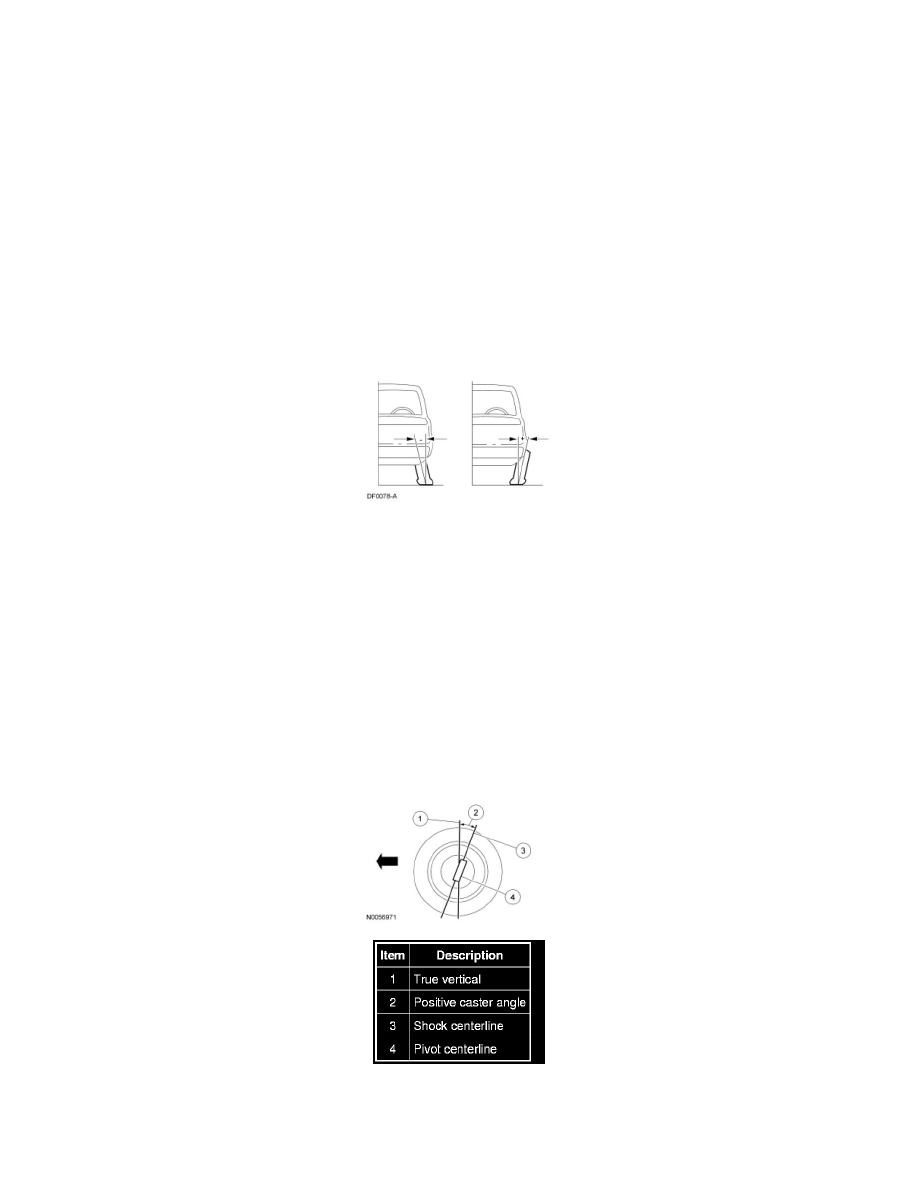Edge AWD V6-3.5L (2009)

Alignment: Description and Operation
Camber
Wheel Alignment Angles
NOTE: When making rear alignment adjustments, it is important to know that when adjustments are made to the rear toe, the rear camber will also be
adjusted (in the same direction as the toe adjustment). When making adjustments to the rear camber, the rear toe will also be adjusted (in the opposite
direction of the camber adjustment). It will be necessary to check the rear camber whenever rear toe adjustments are made and to check the rear toe
whenever rear camber adjustments are made.
Front toe is adjusted through the use of adjustable tie-rod ends. Front camber is adjusted through the use of the upper strut plate. Rotating the upper strut
plate 180 degrees will change the camber +0.4 degrees. Front caster is not adjustable on the vehicle. Rear toe is adjusted through the use of adjustable
toe link cams. Rear camber is adjusted through the use of a cam bolt that attaches the rear lower control arm to the rear subframe.
Camber
Negative and Positive Camber
Camber is the vertical tilt of the wheel when viewed from the front. Camber can be positive or negative and has a direct affect on tire wear.
Caster
Wheel Alignment Angles
NOTE: When making rear alignment adjustments, it is important to know that when adjustments are made to the rear toe, the rear camber will also be
adjusted (in the same direction as the toe adjustment). When making adjustments to the rear camber, the rear toe will also be adjusted (in the opposite
direction of the camber adjustment). It will be necessary to check the rear camber whenever rear toe adjustments are made and to check the rear toe
whenever rear camber adjustments are made.
Front toe is adjusted through the use of adjustable tie-rod ends. Front camber is adjusted through the use of the upper strut plate. Rotating the upper strut
plate 180 degrees will change the camber +0.4 degrees. Front caster is not adjustable on the vehicle. Rear toe is adjusted through the use of adjustable
toe link cams. Rear camber is adjusted through the use of a cam bolt that attaches the rear lower control arm to the rear subframe.
Caster
Caster is the deviation from vertical of an imaginary line drawn through the ball joints when viewed from the side. The caster specifications will give the
vehicle the best directional stability characteristics when loaded and driven. The caster setting is not related to tire wear.
Incorrect Thrust Angle (Dogtracking)
